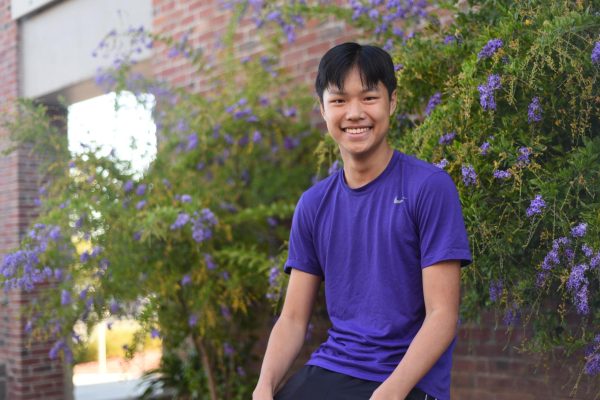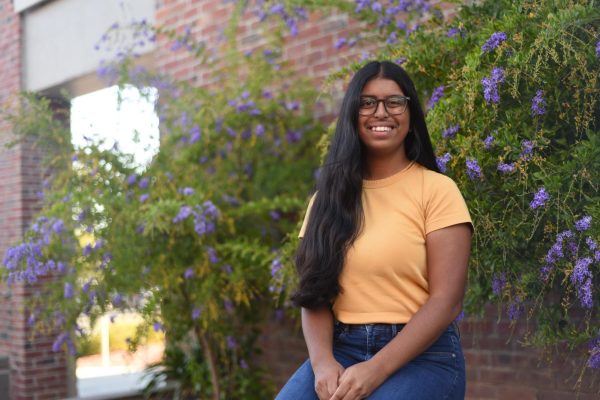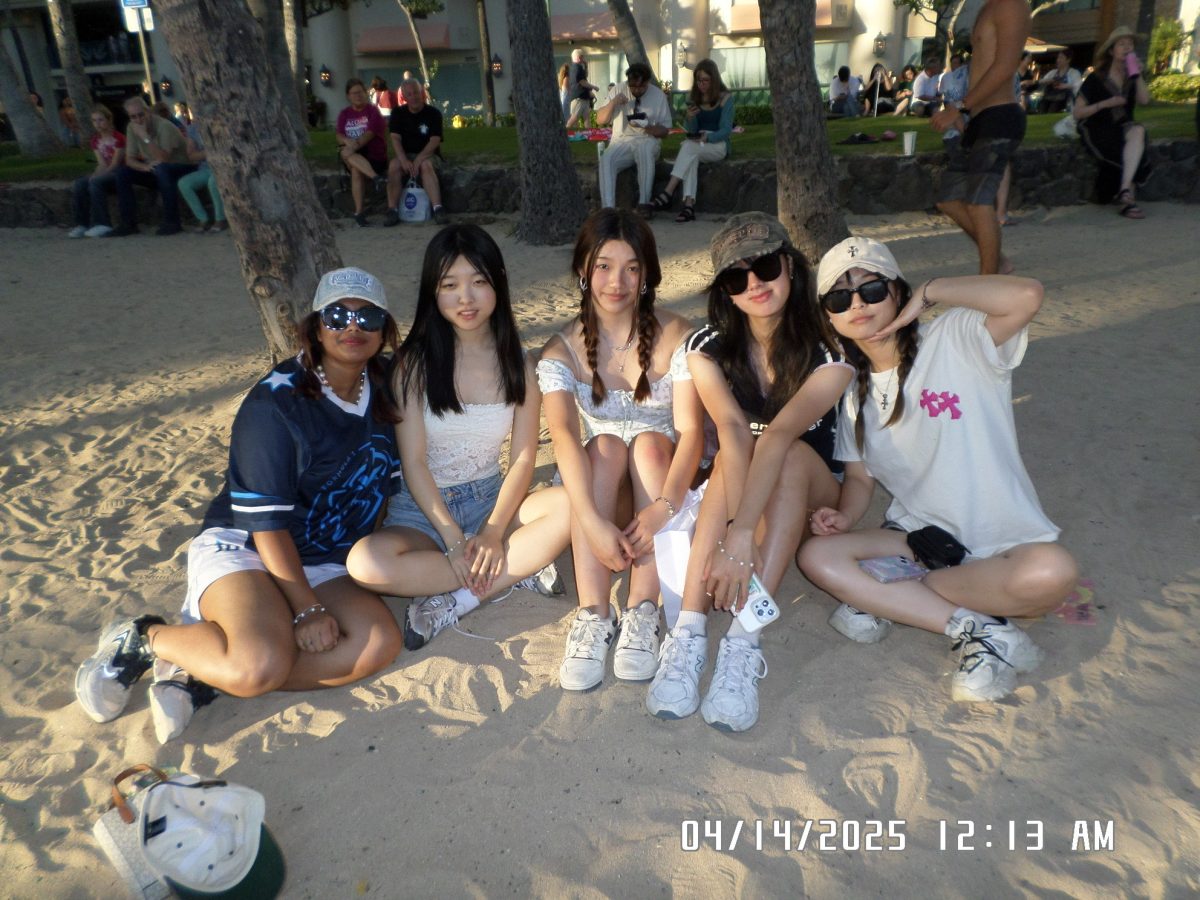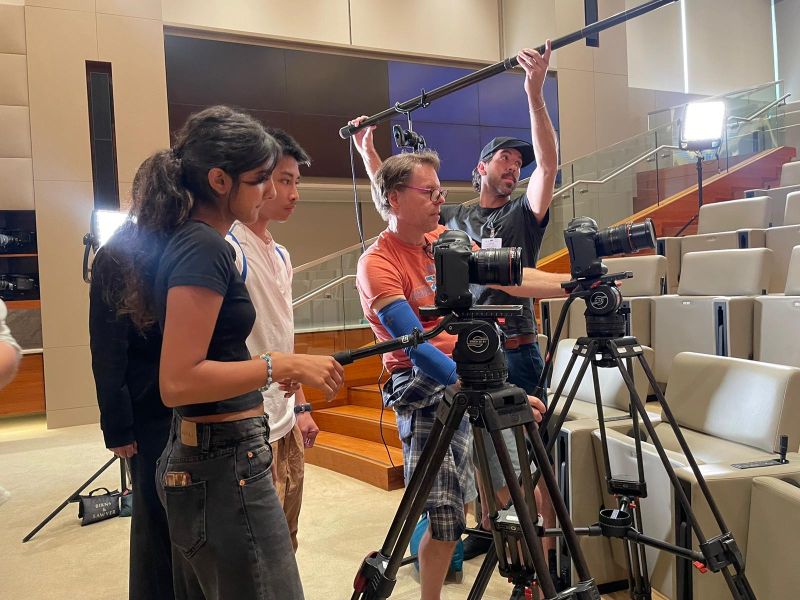Tam Hoang
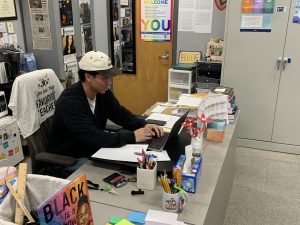
Substitute teacher Tam Hoang’s journey in education began long before he arrived at MVHS. Through his experiences in both high school and undergraduate classes, as well as at a tutoring job, Hoang realized the deep impact educators could have, and he wanted to make that same effect on other students.
“I’ve always wanted to teach and be in the classroom,” Hoang said. “Substitute teaching was a way for me to get experience at the high school level — it’s been a really great experience in terms of getting my foot in the door.”
Now in his second year as a full-time substitute teacher, Hoang rotates between schools at FUHSD, primarily MVHS and Homestead High School. The job has involved taking on long-term roles, for example, filling in after P.E. teacher Brian Sullivan’s retirement.
“I took over for about a month and a half,” Hoang said. “That meant covering all his blocks, creating lesson plans for different P.E. units — dance, basketball and soccer. Week to week, I’d be planning activities for students to do on a daily basis. Those long-term positions are always where I get to build the strongest connections.”
As a substitute, Hoang’s schedule changes frequently. Sometimes, he accepts day-to-day assignments in any subject, while other times he finds long-term assignments. Though he says he has some ability to choose which position to take from the available openings, the system is first-come-first-serve, which can sometimes leave him with limited options. As a result, over the past two years, Hoang has taught a wide range of subjects. While his undergraduate degree is in health sciences, he has enjoyed the variety that comes with the assignments.
“I was a little nervous at first,” Hoang said. “I’m on the younger side of teaching, and I wasn’t sure how I’d manage the classroom. But all the students have been really respectful, and the content has probably been one of the parts I’ve enjoyed the most. Getting to dabble in different subjects — math, history and science — has been a great opportunity to see what teaching each one would be like.”
However, Hoang says that despite how much he’s cherished the experience, his days as a substitute teacher are coming to a close. He plans to leave at the end of this semester as he prepares for the next steps in his life.
“The goal has always been to go back to school,” Hoang said. “I’m still deciding between occupational therapy for my doctorate or a master’s in education. I think it’s been a really fun two years, but I’m looking for different opportunities in navigating which route to go back to now.”
Connie Chiang
As students trickle into their AP Physics 1 class, substitute teacher Connie Chiang is met with a vibrant “老師好!” — “Hello, teacher!” — from one of the students who recognizes her. Having substituted at MVHS for years across all subjects, she’s become a familiar face to many.
As a young woman in Hualien, Taiwan, Chiang worked in public relations for the local government, but her dream was to attend college in America. Though she applied as an international student several years in a row, she lacked funds for airfare and tuition, delaying her studies. Eventually, she found a family willing to sponsor her initial trip, and she enrolled at Arizona State University as a public relations major.
“At that time, because my job was public relations, I thought if I improved my English, I could still do the same job,” Chiang said. “But one student told me, ‘If you want to get a job, you must major in computer science.’ Then, I changed to computer science. I knew nothing about computer science, but in order to get a job, I did it. I didn’t want to be poor again.”

Chiang’s work paid off — once she married her husband, an electrical engineer she met at ASU, the couple moved to Silicon Valley to find work in the booming tech industry. Over 20 years later, Chiang pivoted her career once again, this time because she was inspired by her daughter’s teachers at Lincoln Elementary School.
However, once Chiang attained her teaching credentials and began her first teaching job, she was unable to get tenure, which would have signified greater job security. She attributes this to a preference she has seen among schools for younger teachers since they are more likely to stay with the school for a long time. With this realization, she decided to switch to substitute teaching, a decision that in retrospect, she says, gave her a more relaxed pace than full-time teaching would have.
“To be a full-time teacher, you have to prepare the lesson plans and deal with the classroom management every single day,” Chiang said. “It’s not easy. It’s a lot of work.”
In this way, Chiang says, substitute teaching has been a happy compromise for her. Although she occasionally gets called in the early morning to fill in last-minute, she overall maintains control over both when and where she works. Despite having worked at other schools in the past, she now chooses to substitute only at MVHS, both because it’s a short walk from home and because she finds MVHS students easier to deal with.
Through the years, Chiang’s favorite part of substitute teaching continues to be connecting with students. She hopes that students recognize how far small acts of acknowledgement can go in making others feel valued.
“When they see me on campus and they smile to me, I feel so happy,” Chiang said. “That’s it. It’s a reward for me when students smile and say hi.”
Chiang hopes students understand that these small gestures of politeness compound into interpersonal skills that are crucial in the workplace.
“When you are working in the tech industry, it’s not that you are only good at technology,” Chiang said. “It’s your personality — you know how to deal with people, how to support other people. That makes you successful.”
Steven Shu

Substitute teacher Steven Shu has had an extensive career as a substitute teacher, which ultimately led him to MVHS. Shu began his journey during the COVID-19 pandemic in 2020, teaching online for a year before starting in-person teaching in 2021. Since then, he has substituted in various schools in the Bay Area, including at MVHS, where he typically fills in for short assignments. Though he doesn’t consider himself a long-term substitute since he doesn’t make lesson plans or grade student work, he is often on campus for several days in a row when needed.
“I usually choose whichever job is available,” Shu said. “I’m not really calling myself long-term just because the longest I’ve done is probably three weeks — not more than that.”
Shu, like any other teacher, begins a typical workday before the first bell. The difference is that as a substitute, especially at schools other than MVHS, he tries to arrive extra early to familiarize himself with the layout of the school. After that, he says, it’s just a matter of following the lesson plans he’s given.
Shu currently holds positions as a substitute teacher at many different districts, including districts around his former home in Southern California, as well as the Cupertino Union School District. Having taught various age groups from elementary to high school, he says he prefers teaching high school students, as their behavior is easier to deal with.
Though his work in FUHSD has been relatively steady for the past four years, Shu’s main concern is finding a full-time teaching job, which he has found difficult due to the lack of available positions. He wants to eventually work as a math teacher, noting that substituting by definition is not as stable as he would like.
“There’s no job security,” he said. “It’s not like there’s a union. That’s probably one of my least favorite parts — protection may end any time. If there’s anything you don’t do, like renewing your medical stuff or online training, you can be removed. That happened in other districts I worked in.”
Despite those challenges, Shu continues to teach because he values the role education plays in people’s lives — and because he’s still working toward something more permanent.
“I think it’s a good experience,” Shu said. “I think I’m doing a good thing. I’ve always thought education is important — it got me into this.”




